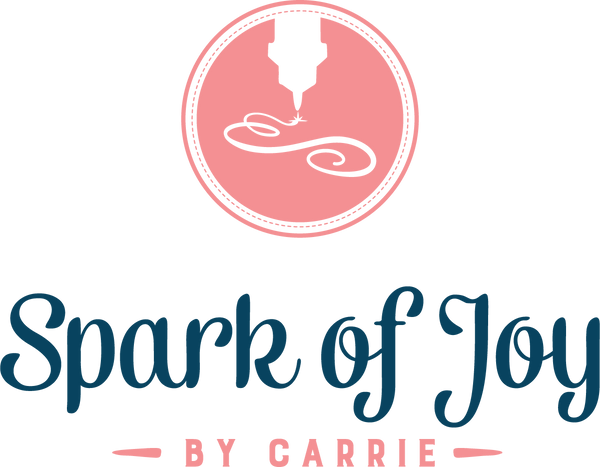
Top Trends in Maker Culture: What’s Next for DIY and Crafting?
The earliest signs of crafting date back to the Stone Age, with carvings and sculptures created from materials like bone, stone, and ivory. Needless to say, crafting has come a long way since those early days.
Whether you're a seasoned crafter or curious about the practice, the maker world offers a ton of opportunities for learning, expression, and entrepreneurship. As technology continues to advance and makers become increasingly resourceful, the ever-evolving industry has several new trends to explore as a hobby or even a business.
The Rise of Tech-Enhanced Crafting
In recent years, technology has widely transformed and enhanced the world of crafting and DIY projects. By blending creative ideas with technological advancements, more opportunities are opening up for crafters to engage in different hobbies or business ventures with some of the following practices.
3D Printing & CNC Machines
Digital fabrication technologies like 3D printing and CNC (Computer Numerical Control) machines have become game-changers for makers. For instance, they allow crafters to translate digital designs into unique physical objects such as jewelry, coasters, and vases.
CNC machines have more advanced capabilities, allowing for precise cutting, carving, and shaping of materials ranging from wood and metal to delicate and ceramics.
AI and Pattern Creation
Artificial Intelligence (AI) is also taking a digital approach in the crafting world. Generative design tools powered by AI can now assist creators in developing unique patterns and helping spark ideas for different design variations.
Wearable Tech in Fashion
Wearable technology is starting to make a prominent appearance on runways and in stores. Smart fabrics embedded with electronics can now change color, monitor health metrics, or respond to environmental conditions.
Makers are experimenting with integrating sensors, LED displays, and interactive elements directly into clothing and accessories, blurring the lines between fashion, technology, and personal expression.
AR/VR for Makers
Augmented and virtual reality technologies are also transforming how crafters learn and collaborate. Virtual workshops, for example, allow artisans to connect globally, sharing techniques and participating in real-time collaborative design sessions. AR tools can provide step-by-step guidance, overlay design templates, and offer interactive learning experiences that make complex crafting techniques more accessible than ever before.
Sustainability and Eco-Friendly Making
The crafting world is experiencing a shift towards sustainability, with upcycling emerging as a powerful movement that improves the way shoppers typically consume products. Makers are reimagining waste as a valuable resource in their projects, turning discarded materials into new creations.
Upcycling and Zero-Waste Crafting
From transforming old clothing into quilts and accessories to converting industrial scraps into unique installations, zero-waste crafting represents a creative response to environmental challenges. This approach not only reduces waste but also encourages makers to think critically about how they want to use recycled materials in order to help the environment.
Biodegradable and Recycled Materials
Makers are now able to create everything from jewelry and clothing to DIY kits using materials that have either minimal environmental impact or are recyclable. These innovations demonstrate how creativity and environmental responsibility can work together.
Slow Making vs. Fast Crafting
Moving away from mass production towards a more mindful approach to creation is something more makers are experimenting with in their projects. Slow making focuses on quality over quantity, encouraging makers to invest time, thought, and care into each project. This helps to eliminate rushing products to the market.
The Growth of Digital Crafting Communities
Digital platforms have helped how makers connect, showcase, and monetize their creative work globally. The growth of the following digital methods and communities have not only helped keep connections intact, but they’ve also proved to drive up more sales and revenue.
Social Media & Online Marketplaces Selling Digitally
Instagram and TikTok have become powerful platforms where crafters can instantly share their processes, techniques, and finished products with global audiences. These platforms transform crafting from a solitary activity into an interactive, community-driven experience.
Etsy has also become a vital crafting marketplace, allowing makers to transform hobby projects into large businesses.
Maker Spaces and Co-Creation Hubs
Physical and virtual maker spaces have become a helpful outlet for new and existing creators to meet and learn from each other. These collaborative environments provide access to specialized tools, technology, and knowledge-sharing networks that individual makers might not otherwise have access to themselves.
Community workshops, both local and online, also allow crafters to learn from diverse perspectives and experiment with new techniques.
NFTs and Digital Crafting
The rise of non-fungible tokens (NFTs) has introduced an entirely new opportunity for crafting. Digital artists and makers can now create, sell, and trade unique digital assets with verifiable ownership. This technology goes beyond physical products, allowing creators to monetize digital designs, animations, and interactive experiences.
Hybrid and Multi-Skill Crafting
Makers are no longer confined to single-medium practices, instead embracing hybrid approaches that combine their diverse skills. The following two different types of crafting have seen a recent spike in popularity.
DIY Furniture and Home Décor
Home crafting has evolved from simple decorative projects to comprehensive interior design solutions. Makers are increasingly designing and creating custom furniture, lighting, and home accessories that reflect personal style and functional needs. With access to advanced tools like CNC machines, laser cutters, and online tutorials, individuals can now design and make complex furniture pieces with multiple methods.
Food and Beverage DIYs
Makers have been embracing complex food and beverage production techniques. Home fermentation, artisan bread baking, craft brewing, and small-batch kombucha production are all examples of ways home kitchens have changed into creative workshops.
It also represents a broader movement towards blending maker culture with the food industry in a new and exciting way.
The Bottom Line
Regardless of personal skills, makers have several new avenues to offer highly personalized products that can be tailored to individual preferences. Whether it’s leveraging new technological software or embracing mixed methods, maker culture continues to innovate in a way that meets modern systems.
